Here we have a simple application to design a single-acting cylinder function using the proximity sensor. If the proximity sensor senses an object then the cylinder should be extended. If the proximity sensor is not sensing an object then the cylinder should be retracted.
Single-Acting Cylinder Control
In this project, the cylinder will be controlled using the proximity sensor.
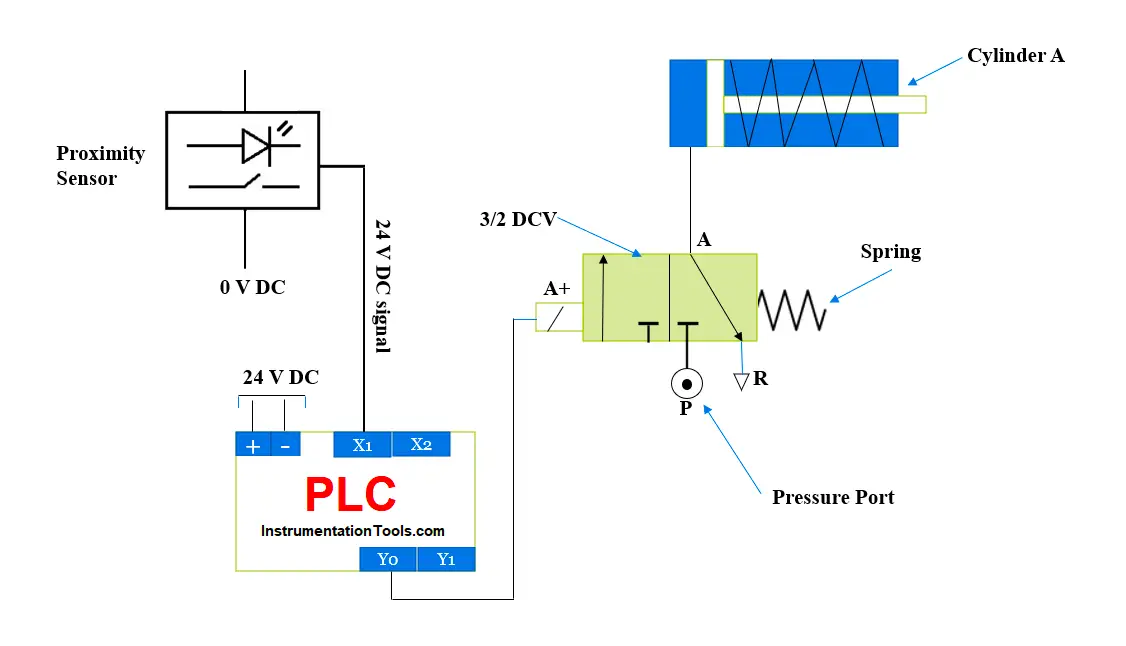
Explanation
As shown in the figure, the pneumatic cylinder is connected to the 3/2 directional control solenoid valve which can be operated by an electric supply coil. The pneumatic airline relates to the P port of the solenoid 3/2 directional control valve. The directional control valve will get the signal from the controller.
Here for example purpose we connected one controller which represents inputs and output. The solenoid directional control valve relates to PLC output (Y0). The proximity sensor is connected to the PLC input (X1). A+ is the electrical coil that can be operated by a 24V DC signal which is coming from the PLC output.
Here we considered the PLC controller for example purpose, not considered programming part. Programming is needed to operate outputs according to inputs.
System Components:
Single-Acting Cylinders
With their ability to provide regulated linear motion using the force of air or hydraulic fluid, the single-acting cylinders are essential to automation.
Because of their single port design for fluid entry and external force design for the return stroke, they can be used in a variety of applications that call for dependability and simplicity.
Proximity Sensors
The proximity sensor is the sensor that can detect objects. If then it will generate the output signal and if the object is not present it will not generate the signal. The proximity sensor will convert the presence of the object into an electrical signal.
Devices like limit switches can detect objects by touching them and proximity sensors can sense objects without touching them. There are many types of proximity sensors available as per requirements we can use for various applications.
Control System (PLC)
The control system is used for the operation of the cylinder and monitors the signals from the proximity sensor. It can be a programmable logic controller (PLC).
Control system we can use PLC for the logical operation if the sensor signal is activated then operate the solenoid so the cylinder can move in to forward direction and if the signal is not available then the cylinder can return to its original position.
Directional Control Valve
Air and water valves control the flow of water or air into and out of the cylinder. A 3/2-way valve is generally used with a single-acting cylinder. It has a mechanical structure so it will change air flow direction and it can allow flow as per requirement.
Working Principle
Here we made a system for understanding the concept. Proximity sensor for object sensing, we used a proximity sensor so we can sense object presence of the object and generate the signal.
Let’s take the example of the part sensing system in which we are doing a tank assembly system. Consider a small part of the complete system in that if the tank is present on the fixture, then it will give the command to the PLC and the PLC will generate the output so the cylinder will operate, and it will hold the tank.
For proximity you have to give a 24V DC supply and it will generate the 24V DC signal once it senses some object. Once it senses the object it will give a signal to the PLC input so as per the program PLC will generate the output signal of 24V DC.
Our solenoid directional control valve input supply is 24 V DC so it will get supply and that will move the plunger of the directional control valve. As per the directional control valve operation air direction will change and it will operate the cylinder.
Applications
There are many applications for this type of electromechanical system. Any machine can use this electromechanical system in which there is a need to sense objects and perform the next action.
In part assembly systems, this electromechanical system is widely used to perform the tasks. In which the sensor will sense the part and perform the next action.
In a part clamping system, this mechanism can be used to perform the task. If the object is sensed, then perform the clamping process.
In the Part rejection system, this mechanism can be used. If the system is detecting defective parts during the operation, then it will give a command to the cylinder and the cylinder will push the part out.
Advantages
This is a simple and easy system to set up, set up is easy so we can set up this system for any machine.
A Solenoid valve is used here, so no need for more pneumatic connections.
If you liked this article, then please subscribe to our YouTube Channel for Electrical, Electronics, Instrumentation, PLC, and SCADA video tutorials.
You can also follow us on Facebook and Twitter to receive daily updates.
Read Next:
- How to Select a Directional Valves?
- How to Choose a PLC for a Project?
- Moving Data between Siemens PLCs
- Proximity Switch Working Animation
- Pneumatic Cylinder Air Calculation
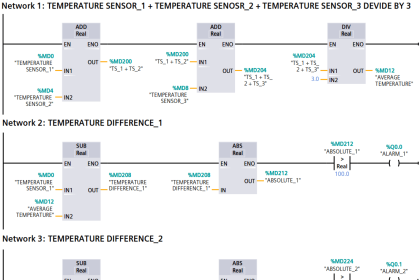

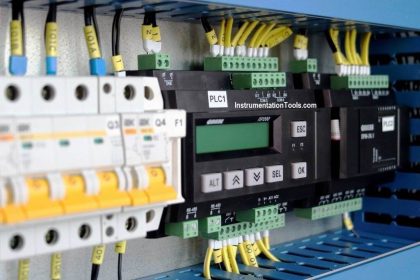
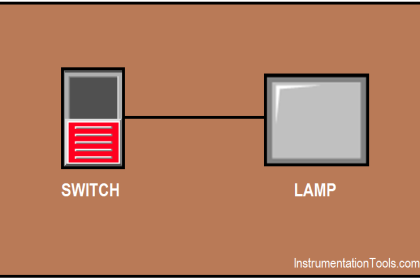
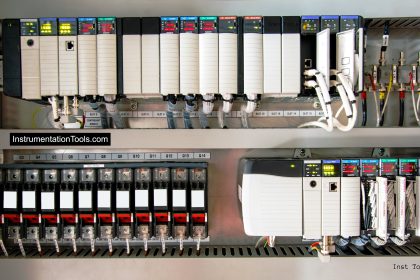
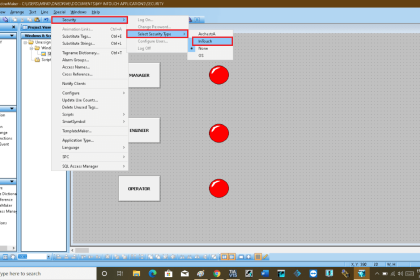
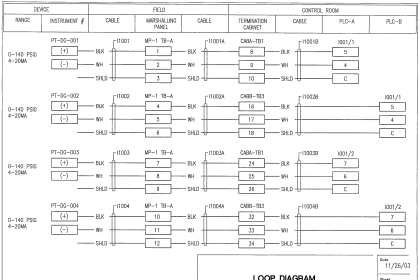
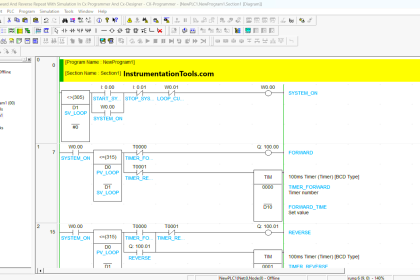
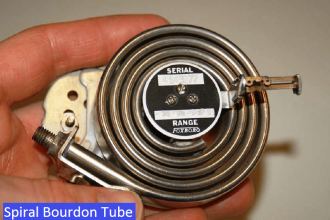
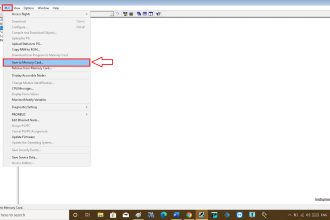
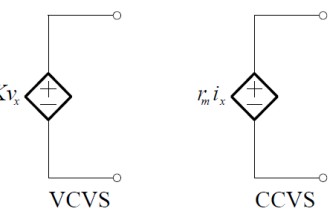
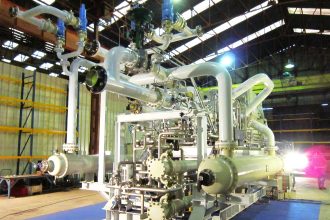
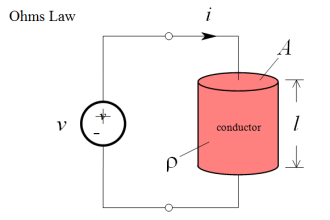
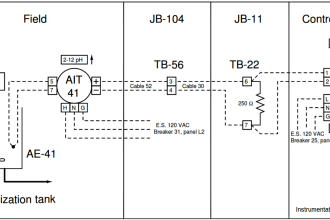

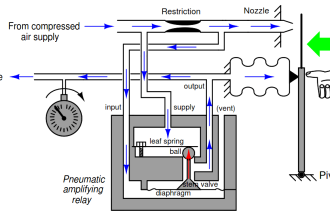

This design will require very accurate proximity Sensor or programming PLC shall consider of Proximity output not giving full 24 VDC.
My concern will be if the sensor is not to accurate then the feedback 24 VDC from Sensor will not be achieved and can cause no movement on Actuator.